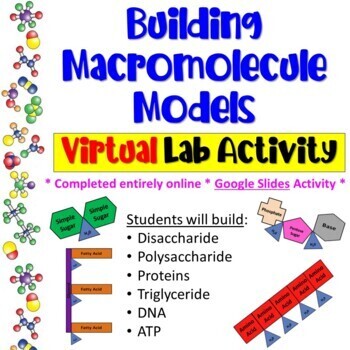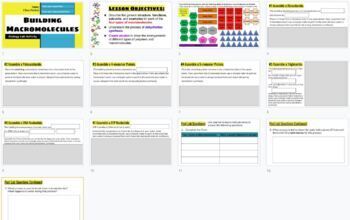Building Macromolecule Models * Digital Lab Activity
Biology Zoology Forensic Science
2k Followers
Resource Type
Formats Included
- Google Drive™ folder
Pages
38 pages
Biology Zoology Forensic Science
2k Followers

Made for Google Drive™
This resource can be used by students on Google Drive or Google Classroom. To access this resource, you’ll need to allow TPT to add it to your Google Drive. See our FAQ and Privacy Policy for more information.
What educators are saying
What a great resource! Great resource, easy to use, kids were engaged throughout the lesson. I have recommended this lesson to fellow teachers and they love it as well.
My students loved this activity and had so much fun completing all the task. It was fun to see them cheering on their classmates as the each tried to program the mouse.
Description
Student Objectives:
- Describe the general structure, subunits, and examples for each of the four types of macromolecules.
- Understand the process of dehydration synthesis.
- Create models to show the arrangements of these polymers and macromolecules.
Students will follow directions to answer questions and build a disaccharide, polysaccharide, two proteins, triglyceride, DNA, and ATP using interactive Google Slides. There are text boxes for them to type their answers and shapes they can cut/copy, paste, and drag to build their models. This assignment can be completed entirely online and submitted to teachers and graded using Google Classroom.
* A Modified Version to be used with Special Education Students and a Teacher Answer Key are also included.
* This digital activity pairs with the notes from my FREE LESSON called Building Macromolecule Models Paper Lab Activity, Notes, and Review Questions.
Total Pages
38 pages
Answer Key
Included
Teaching Duration
N/A
Report this resource to TPT
Reported resources will be reviewed by our team. Report this resource to let us know if this resource violates TPT’s content guidelines.



